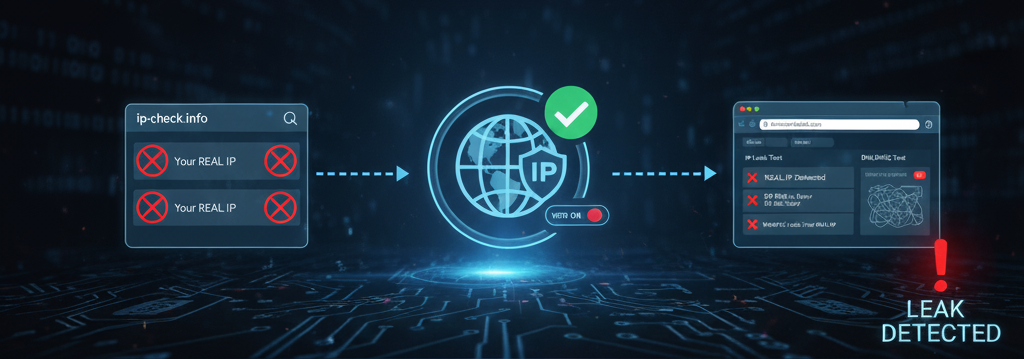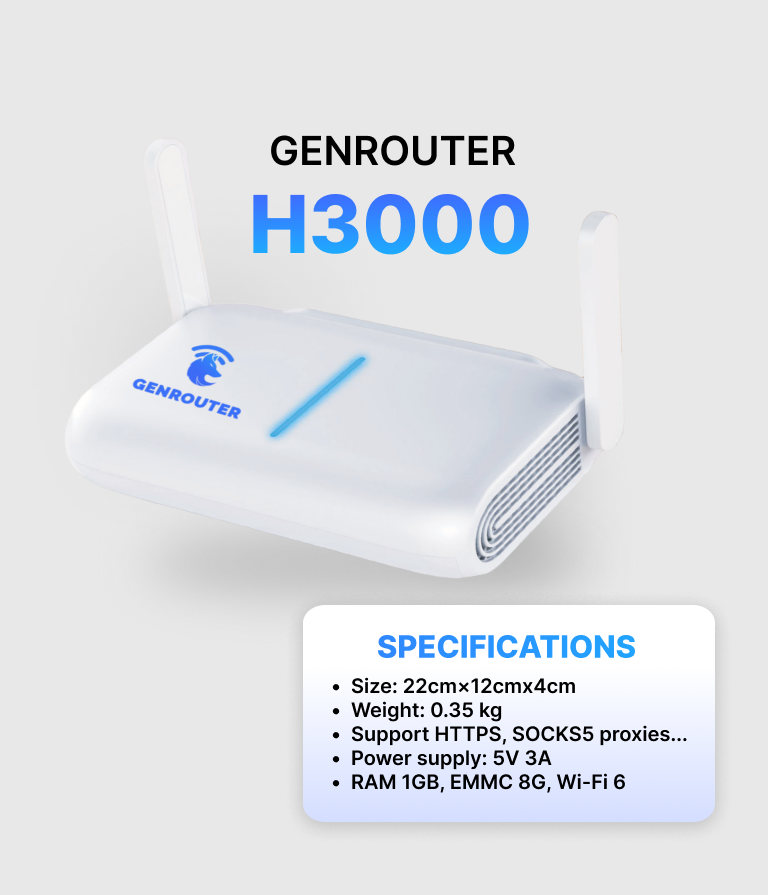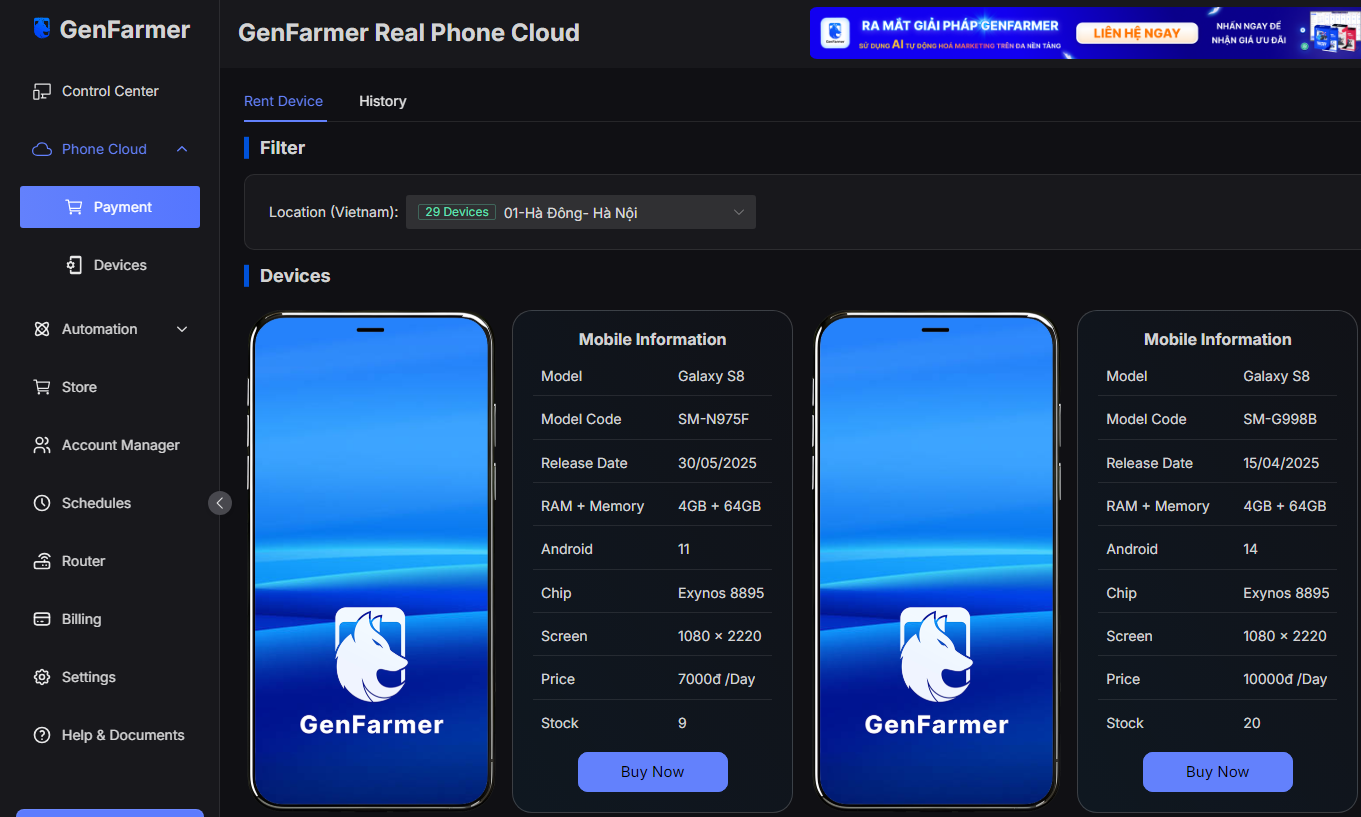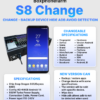A VPN leak is a silent flaw that could be exposing your real identity and location to every platform you interact with, destroying your entire operation in an instant. This can happen even after you’ve done your research and set up your marketing, MMO, or e-commerce operation with a VPN or proxy for each account, thinking your assets are segmented, anonymous, and safe.
A VPN leak is a critical security failure where your device’s real identifying information—such as your IP address or DNS requests—”leaks” outside the encrypted VPN tunnel. For a casual user, this is a privacy breach. For a professional running multiple accounts on a box phone farm or cloud phone system, it’s a “game over” event. It provides platforms with a direct link between all your “separate” accounts, leading to mass suspensions and financial loss.
In this article, we’ll break down the “big three” VPN leaks (IP, DNS, and WebRTC), show you how to test for them in seconds, and provide robust solutions to fix them for good.
What is a VPN Leak and Why Should You Care?
A VPN (Virtual Private Network) is supposed to create a secure, encrypted tunnel between your device and the internet. It masks your real IP address with one from its server, making you appear to be in a different location and encrypting your activity from your ISP.

A VPN leak happens when, despite the VPN being active, this data escapes the tunnel. The danger for professionals is severe:
- Linked Accounts: Platforms like Facebook, Google, and TikTok use sophisticated risk control algorithms. If they see 50 “different” accounts, each with a unique proxy IP, but all sharing the “same” leaked DNS server or “real” WebRTC IP, they will instantly flag them as a single entity and ban the entire network.
- Defeated Anonymity: The entire purpose of using proxies or VPNs for multi-account management is to create unique, authentic identities. A VPN leak defeats this purpose, wasting your investment in proxies and accounts.
- Privacy Exposure: Your real location and browsing activity are exposed to websites and your Internet Service Provider (ISP).
The Three Main Types of VPN Leaks
Understanding your enemy is the first step. Leaks generally fall into three categories.
1. The IP Address Leak (The Obvious One)
This is when your “real” IP address is exposed instead of the VPN’s IP. The most common culprit today isn’t just a dropped connection; it’s the IPv4 vs. IPv6 conflict.
- How it happens: Many ISPs now provide both an older IPv4 address and a newer IPv6 address. Your VPN might be excellent at routing all IPv4 traffic, but if it doesn’t support IPv6, your device may bypass the VPN entirely when a website (like Google or Facebook) requests an IPv6 connection.
- The Result: The website sees your VPN’s IPv4 address “and” your real IPv6 address—a massive red flag.
- Other Cause: A failing “Kill Switch.” Your VPN connection drops, and your device automatically reconnects to the internet using your real IP before the VPN can re-establish its connection.
2. The DNS Leak (The Cunning One)
The Domain Name System (DNS) is the internet’s phonebook. It translates human-readable domain names (like `genfarmer.com`) into computer-readable IP addresses.
- How it “should” work: Your device sends its DNS request “inside” the encrypted VPN tunnel to the VPN’s private, anonymous DNS servers.
- What a DNS Leak is: Your device “bypasses” the tunnel and sends its DNS request directly to your public ISP (e.g., Comcast, Verizon, AT&T).
- The Result: Your ISP (and any platform monitoring your traffic) can see every website you visit. For multi-account operators, this is a clear footprint. A platform will see 100 accounts with different IPs all sending their DNS requests to the “same” “Comcast-DNS-Server-123,” immediately linking your entire farm.
3. The WebRTC Leak (The Browser Betrayal)
This is the most common and dangerous leak for browser-based operations. WebRTC (Web Real-Time Communication) is a technology built into browsers like Chrome, Firefox, and Safari that allows for real-time voice and video calls directly in the browser (e.g., Google Meet, Discord).
- How it works: To establish the most direct call connection, WebRTC needs to know “all” possible IP addresses for your device. It broadcasts your real IP, your local IP, “and” your VPN IP.
- What a WebRTC Leak is: Any website can run a simple piece of Javascript to trigger this WebRTC request and read your “real” IP address, completely bypassing the VPN.
- The Result: You think you’re hidden behind your VPN, but the website (or platform) can see your true IP with just a few lines of code.
How to Test for VPN Leaks in 3 Simple Steps
Don’t guess. Test your setup right now.

- Get Your Baseline: Disconnect your VPN. Go to a site like `ip-check.info` or `whatismyipaddress.com`. Write down your “Real IPv4” and “Real IPv6” addresses.
- Connect and Check IP: Connect your VPN. Refresh that same page.
- IP Leak Test: Does the page show your VPN’s IP? If you see your “Real” IPv4 or IPv6 address from Step 1, you have an IP leak.
- Run Advanced Tests: Go to a specialized testing site like `browserleaks.com/webrtc` or `dnsleaktest.com`.
- DNS Leak Test: Run the “Extended Test” on `dnsleaktest.com`. Does it show your ISP’s name (e.g., “Comcast”)? You have a DNS leak. It should only show your VPN provider’s servers.
- WebRTC Leak Test: On `browserleaks.com/webrtc`, look at the “Public IP Address” field. Does it show your “Real” IP from Step 1? You have a WebRTC leak.
How to Fix VPN Leaks: From Simple Fixes to Pro-Level Solutions
1. Fixing IP Leaks (IPv6)
- Simple Fix: Ensure your VPN has a “Kill Switch” feature and that it is “enabled”. This is non-negotiable.
- Advanced Fix:
- Best Option: Use a premium VPN that fully supports and routes IPv6 traffic.
- Good Option: Disable IPv6 on your computer. On Windows, go to “Network & Internet settings” > “Change adapter options,” right-click your connection, go to “Properties,” and uncheck “Internet Protocol Version 6 (TCP/IPv6).” This forces all traffic over IPv4, which your VPN can handle.
2. Fixing DNS Leaks
- Simple Fix: Use a VPN that explicitly advertises “DNS Leak Protection” and runs its own private, no-log DNS servers.
- Advanced Fix: Manually change your device’s DNS settings (on your router or PC) from your ISP’s default to a public, privacy-focused one like Cloudflare (`1.1.1.1`) or Google (`8.8.8.8`).
3. Fixing WebRTC Leaks (The Most Important)
- Simple Fix (Plugins): Install a reputable browser extension like “uBlock Origin” (which can block WebRTC by default in its advanced settings) or “WebRTC Leak Prevent”.
- Advanced Fix (Manual):
- In Firefox: Type `about:config` in the address bar. Search for `media.peerconnection.enabled` and double-click it to set it to `false`.
- In Chrome/Brave: You “must” use an extension. There is no reliable built-in flag to disable it anymore.
The Ultimate Solution: Moving Beyond Leaky Software VPNs
All the fixes above have a fundamental weakness: they are “software-based”. A browser update can disable your plugin, a Windows update can re-enable IPv6, and a simple misconfiguration can re-open the leak. This is not a reliable strategy for a professional operation.
You cannot risk a 1,000-account farm on a single browser plugin. The professional solution is to build an “infrastructure” that makes leaks impossible by design.
1. Solution 1: Hardware-Level Proxy/VPN Management
Instead of running leaky VPN software on your PC or phone, you manage the connection at the hardware level. A specialized Antidetect Router or Proxy Router handles the connection “for” your devices. All traffic from your box phone farm or PC is forced through the router’s encrypted tunnel. The device “never” even sees the real IP, making IP, DNS, and WebRTC leaks at the device level impossible.

2. Solution 2: GenFarmer Cloud Phone
Our Cloud Phone solutions are built for this. We manage the entire network environment at the hypervisor level. The device you connect to is already a clean, isolated virtual machine with a secure, dedicated IP. We handle the networking and fingerprinting to ensure there are no leaks, providing a sterile, safe environment designed to pass platform risk controls from day one.

Conclusion: Stop Plugging Leaks, Start Building a Fortress
A VPN leak is not a minor inconvenience; it’s a critical business vulnerability. An IP, DNS, or WebRTC leak is the “smoking gun” that platforms use to link your accounts and justify mass suspensions.
While software fixes like plugins and disabling IPv6 are temporary patches, they are not a stable foundation for a professional business. It’s time to stop gambling with your accounts.
Professionalize your setup. Explore GenFarmer’s ecosystem of hardware-level proxy routers, secure Cloud Phones, and automated box phone farms. We build the leak-proof infrastructure so you can focus on what matters: growing your business.











